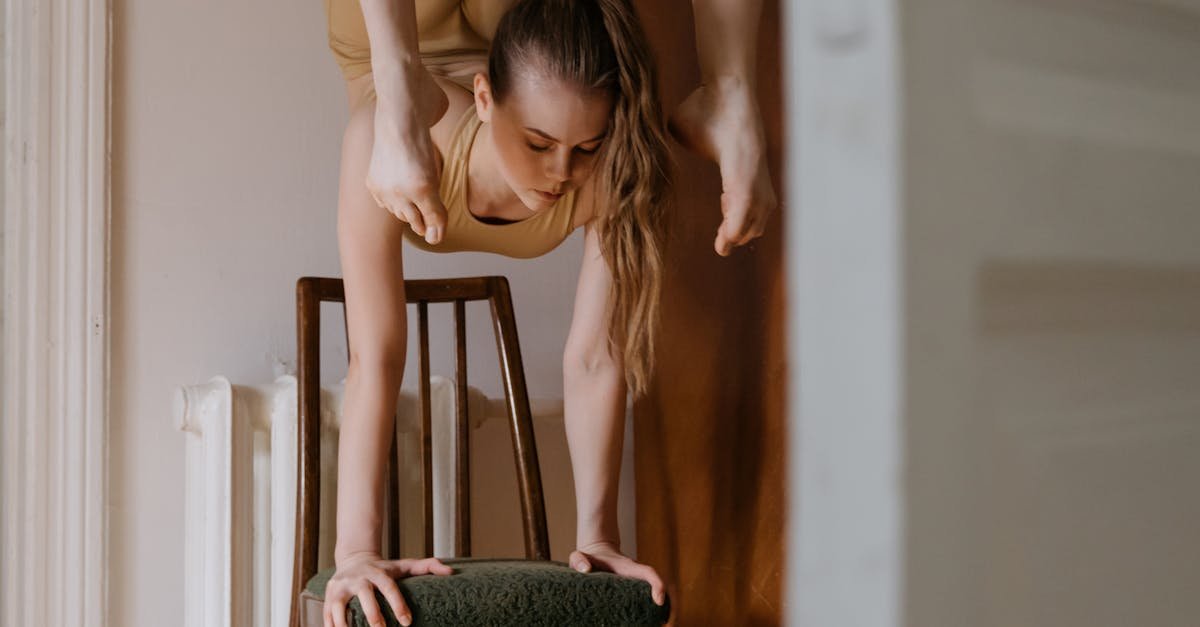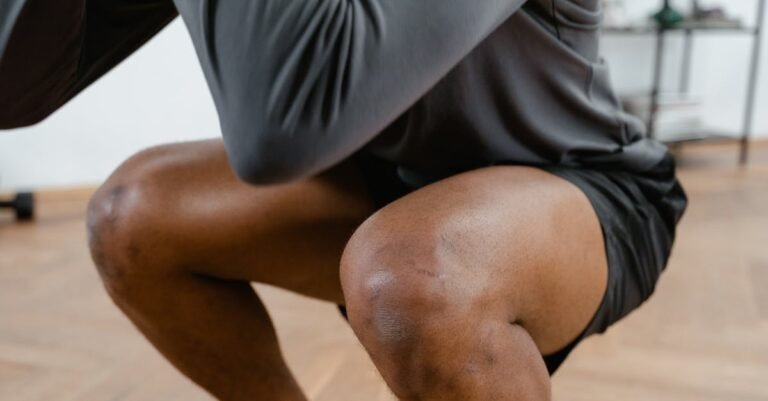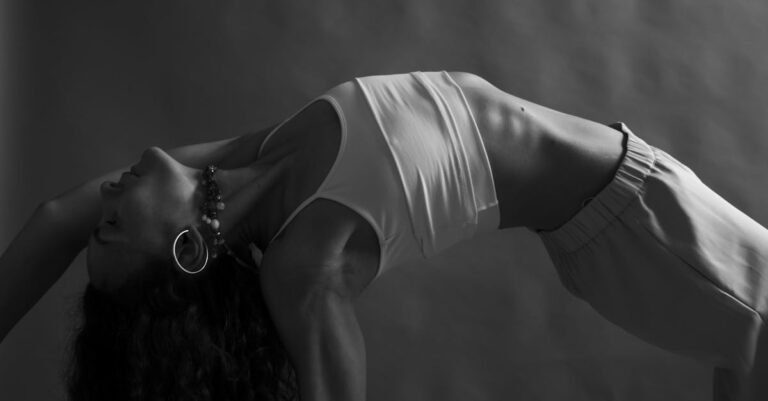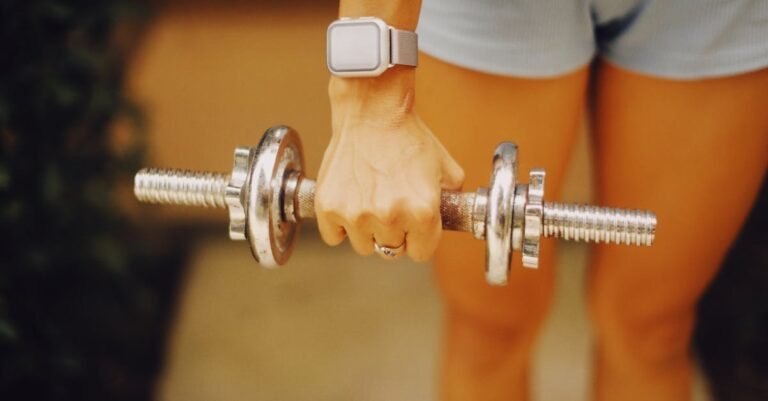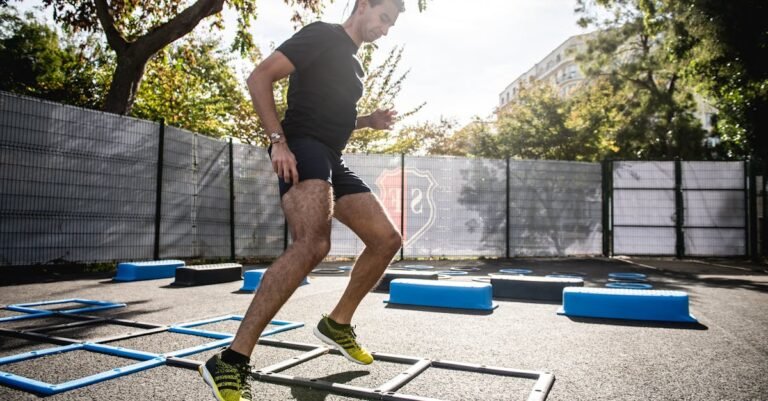Table of Contents
Calisthenics For Beginners: Mastering The Art Of Body Control
-
Introduction: What Exactly is Calisthenics and Why Body Control Matters?
-
Laying the Foundation: Understanding Body Control in Calisthenics
-
Mind Over Matter: Developing the Mind Muscle Connection
-
Essential Beginner Calisthenics Exercises for Body Control
-
The Power of Breath: Fueling Your Movements
-
Consistency is Key: Building Control Over Time
-
Conclusion: Your Journey to Calisthenics Mastery Starts Now
The Article
Calisthenics For Beginners: Mastering The Art Of Body Control
Introduction: What Exactly is Calisthenics and Why Body Control Matters?
So, you’ve heard about calisthenics? Maybe you’ve seen incredible feats of strength online – people doing flags, handstands, muscle ups – and thought, “Wow, I wish I could do that!” Well, guess what? You absolutely can start that journey. Calisthenics, at its heart, is simply using your own bodyweight as resistance to build strength, flexibility, and overall fitness. Think push ups, squats, lunges, planks – exercises many of us are already familiar with, but taken to a whole new level.
But here’s the secret ingredient, the thing that separates flailing around from fluid, powerful movement: body control. It’s not just about muscling through reps; it’s about understanding how your body moves in space, engaging the right muscles at the right time, and maintaining stability throughout an exercise. Why is this so crucial, especially for beginners? Because without body control, you risk injury, develop bad habits, and frankly, you won’t tap into the true potential of calisthenics. It’s the difference between building a sturdy house on a solid foundation versus a shaky structure on sand. Ready to build that solid foundation? Let’s dive in!
Laying the Foundation: Understanding Body Control in Calisthenics
Think of starting calisthenics like learning to play a musical instrument. You wouldn’t jump straight into a complex concerto, right? You’d start with scales, learning how each note sounds, how to hold the instrument correctly. Body control in calisthenics is similar. It’s about mastering the fundamentals of movement before attempting the flashy stuff. It means being acutely aware of your body’s position, tension, and movement path.
This isn’t just about brute force; it’s about finesse. It’s learning to recruit tiny stabilizer muscles you didn’t even know you had, maintaining tension where needed, and relaxing where you don’t. It’s about feeling the exercise, not just doing it. This foundational control is what allows you to progress safely and effectively, unlocking more advanced skills later on.
Proprioception: Your Body’s Inner GPS
Ever closed your eyes and touched your nose? That’s proprioception in action! It’s your body’s incredible ability to sense its own position, movement, and orientation in space, even without looking. Think of it as your internal GPS system. In calisthenics, proprioception is paramount. How can you control your body if you don’t know where its parts are or how they’re moving relative to each other?
Improving proprioception involves paying close attention. When you do a squat, can you feel if your knees are tracking over your toes? When you hold a plank, can you sense if your hips are sagging or piked too high? Exercises performed slowly and deliberately are fantastic for honing this sense. Balance exercises, even simple ones like standing on one leg, also directly challenge and improve your proprioceptive awareness. The better your internal GPS, the smoother and more controlled your calisthenics movements will become.
The Core: Your Center of Power and Stability
Forget just chasing six pack abs (though they might be a nice side effect!). When we talk about the ‘core’ in calisthenics, we’re talking about a whole system of muscles wrapping around your torso – front, back, and sides. This includes your abs, obliques, lower back muscles, glutes, and even pelvic floor. Think of your core as the central link in your body’s kinetic chain. It connects your upper and lower body and is responsible for stabilizing your spine and pelvis during almost every movement.
A strong, stable core is non negotiable for body control. Why? Because it provides the solid platform from which your limbs can generate force effectively and safely. Imagine trying to fire a cannon from a canoe – pretty unstable, right? That’s like trying to do powerful movements with a weak core. A braced, engaged core prevents energy leaks, protects your spine from injury, and allows for smooth transitions between movements. Whether you’re doing a push up, a pull up, or balancing on one leg, your core is working overtime to keep you stable and controlled.
Simple Core Activation Drills
Before jumping into intense core workouts, let’s focus on activation – waking up those crucial core muscles. These aren’t about exhaustion; they’re about connection.
- Pelvic Tilts: Lie on your back with knees bent, feet flat. Gently flatten your lower back against the floor by tilting your pelvis backward (posterior tilt), engaging your lower abs. Then, gently arch your lower back slightly off the floor by tilting your pelvis forward (anterior tilt). Focus on the subtle movement and the muscle engagement.
- Dead Bug: Lie on your back, knees bent at 90 degrees over hips, shins parallel to the floor, arms extended towards the ceiling. Brace your core, keeping your lower back pressed gently into the floor. Slowly lower one opposite arm and leg towards the floor, maintaining core stability. Return to the start and repeat on the other side. The key is *no* movement in your lower back.
- Bird Dog: Start on all fours (hands under shoulders, knees under hips). Engage your core to keep your back flat (imagine balancing a glass of water on it). Slowly extend one arm straight forward and the opposite leg straight back, keeping your hips and shoulders square to the ground. Hold briefly, focusing on stability, then return and repeat on the other side.
Perform these drills slowly, focusing intensely on feeling the core muscles working to stabilize your torso. It’s about quality, not quantity.
Mind Over Matter: Developing the Mind Muscle Connection
Have you ever gone through the motions of an exercise, thinking about your grocery list or what’s on TV later? We’ve all been there. But to truly master body control, you need to cultivate the mind muscle connection (MMC). This is the conscious ability to focus on, feel, and intentionally contract a specific muscle or muscle group during an exercise.
It sounds a bit ‘woo woo’, but it’s grounded in neuroscience. By focusing your mental energy on the target muscle, you can actually enhance neural drive to that muscle, leading to better activation, stronger contractions, and ultimately, more effective training and control. It transforms an exercise from a simple physical task into a mindful practice. Instead of just pushing the ground away during a push up, you actively think about squeezing your chest and triceps. Instead of just standing up from a squat, you focus on driving through your heels and engaging your glutes.
Slow and Controlled Movements: The Secret Sauce
Want to fast track your mind muscle connection and body control? Slow down! Rushing through repetitions using momentum is the enemy of control. When you perform exercises slowly and deliberately, you eliminate momentum and force your muscles to do all the work through the entire range of motion.
Try this: next time you do a push up, take 3 5 seconds to lower yourself down (the eccentric phase) and 2 3 seconds to push back up (the concentric phase). Feel every inch of the movement. Notice which muscles are working at different points. Can you feel your chest stretching at the bottom? Can you feel your triceps engaging as you push up? This deliberate slowness allows your brain the time it needs to process feedback from your muscles (proprioception!) and send stronger signals back (MMC!). It makes the exercise harder, yes, but infinitely more effective for building control.
Visualization Techniques
Don’t underestimate the power of your imagination! Visualization, or mental imagery, can significantly enhance your body control. Before or even during an exercise, mentally rehearse the perfect execution. Imagine yourself moving smoothly, engaging the correct muscles, maintaining perfect form.
For example, before attempting a pull up (or a variation like an assisted pull up or row), close your eyes and visualize pulling your chest towards the bar. Imagine your back muscles contracting powerfully, your core staying tight, your body moving as one controlled unit. This mental practice primes your nervous system, making it easier to replicate the desired movement physically. You can even visualize the muscle fibers contracting and working together. The more vivid the visualization, the more effective it can be in bridging the gap between intention and action.
Essential Beginner Calisthenics Exercises for Body Control
Okay, theory time is over – let’s get practical! While there are countless calisthenics exercises, focusing on a few foundational movements and mastering their control is far better than dabbling in many with poor form. These core exercises build strength across major muscle groups while demanding significant body awareness and stability.
Mastering the Push Up: More Than Just Chest
The humble push up is often underestimated. Done correctly, it’s a full body exercise that builds incredible pushing strength and teaches total body tension. It’s not just about your chest, shoulders, and triceps; your core needs to be rock solid to prevent your hips from sagging, and even your legs should be engaged.
To maximize control:
- Hand Placement: Place hands slightly wider than shoulder width apart. Experiment to find what feels best for your shoulders.
- Body Line: Maintain a straight line from your head to your heels. Squeeze your glutes and brace your core as if you’re about to be punched in the stomach. Don’t let your hips sag or pike up.
- Elbow Path: Keep your elbows tucked relatively close to your body (around a 45 degree angle), not flared out wide. This protects your shoulders.
- Range of Motion: Lower yourself until your chest is close to the ground (or as low as you can control), pause briefly, and push back up powerfully, fully extending your elbows at the top while keeping shoulders away from your ears.
- Focus: Think about actively pulling yourself down and pushing the floor away. Feel the tension throughout your body.
Push Up Progressions for Better Control
Can’t do a full push up yet? No problem! Control is built through progression.
- Wall Push Ups: Stand facing a wall, place hands on it, and perform the push up motion. Easiest variation.
- Incline Push Ups: Place your hands on an elevated surface (table, sturdy chair, bench). The higher the surface, the easier the exercise. Gradually lower the incline as you get stronger, focusing on perfect form at each step.
- Knee Push Ups: Perform push ups on your knees instead of your toes. Crucially, maintain that straight line from head to knees and keep the core braced. Avoid letting your hips pike up.
- Standard Push Ups: The goal! Once you master these with control, you can explore harder variations.
Focus on mastering each stage with impeccable control before moving to the next. Quality over quantity, always.
Perfecting the Squat: Foundation for Lower Body Power
The bodyweight squat is fundamental for lower body strength, mobility, and control. It teaches you to coordinate your hips, knees, and ankles while maintaining an upright torso and stable core.
For controlled squats:
- Stance: Feet roughly shoulder width apart, toes pointing slightly outwards (find what’s comfortable for your hips).
- Initiation: Begin the movement by pushing your hips back, as if sitting down in a chair far behind you.
- Depth: Squat down as low as you can while maintaining good form – ideally, until your thighs are parallel to the ground or lower, but only go as deep as you can control without your lower back rounding or heels lifting.
- Knee Tracking: Ensure your knees track in line with your toes throughout the movement. Don’t let them cave inwards.
- Torso Angle: Keep your chest up and your back relatively straight (a natural curve is fine, but avoid excessive rounding). Bracing your core helps immensely here.
- Weight Distribution: Keep your weight balanced over your mid foot, pushing through your heels to stand back up.
- Focus: Feel your glutes and quads working. Control the descent (don’t just drop down) and drive up powerfully.
Practice in front of a mirror initially or film yourself to check your form.
The Plank: Building Unshakeable Core Stability
The plank is a static hold, but don’t let that fool you – it’s incredibly demanding on your core and teaches total body tension, a cornerstone of body control.
Keys to a controlled plank:
- Position: Either on your forearms (elbows directly under shoulders) or hands (hands directly under shoulders).
- Body Line: Straight line from head to heels. No sagging hips, no piking butt. Imagine your body is a rigid board.
- Core Engagement: Brace your abs HARD. Imagine pulling your belly button towards your spine.
- Glute Squeeze: Squeeze your glutes tightly. This helps stabilize your pelvis and prevents lower back sagging.
- Shoulder Position: Push the ground away through your forearms/hands to keep your upper back engaged and prevent your shoulder blades from collapsing together. Keep shoulders away from ears.
- Breathing: Don’t hold your breath! Breathe steadily throughout the hold.
- Focus: Actively create tension everywhere. It shouldn’t feel passive. Aim for quality holds where you maintain perfect form, even if it’s only for 15-20 seconds initially.
Bodyweight Rows: Balancing Your Upper Body Strength
Many beginners focus heavily on pushing movements (like push ups) and neglect pulling. Bodyweight rows balance this out, strengthening your back, biceps, and rear shoulders, which is crucial for posture and overall upper body control.
How to perform controlled rows (you’ll need something sturdy to pull on, like a low bar, rings, or even a sturdy table):
- Setup: Lie underneath your bar/rings/table edge. Grip it with hands slightly wider than shoulder width.
- Body Position: Keep your body straight like a plank, heels on the ground (easier) or feet elevated (harder). Engage your core and glutes.
- The Pull: Pull your chest towards the bar/edge. Focus on squeezing your shoulder blades together. Imagine pulling with your elbows, not just your hands.
- Control: Lower yourself back down slowly and with control. Don’t just drop. Maintain body tension throughout.
- Elbow Path: Keep elbows relatively tucked, not flared out wide.
- Focus: Feel the muscles in your upper back doing the work. Avoid using momentum or letting your hips sag.
Adjust the angle of your body to modify difficulty – the more horizontal you are, the harder it is.
The Power of Breath: Fueling Your Movements
Breathing seems automatic, right? But how you breathe during exercise dramatically impacts your stability, strength, and control. Holding your breath erratically or breathing shallowly can limit your performance and make control harder.
A common and effective technique is “bracing and breathing.” Before a strenuous part of a movement (like pushing up from a push up or standing up from a squat), take a deep breath in, brace your core hard (like you’re about to be hit), and then exhale forcefully during the exertion phase. For less intense parts or static holds like planks, maintain steady, controlled breathing, focusing on expanding your diaphragm rather than just shallow chest breathing.
Think of your breath as an anchor. It synchronizes with your movement, provides internal pressure to stabilize your core (intra abdominal pressure), and ensures your muscles get the oxygen they need. Pay attention to your breath during every exercise. Is it helping you stay tight and controlled, or is it erratic? Conscious breathing is a simple yet powerful tool for enhancing body control.
Consistency is Key: Building Control Over Time
Mastering body control isn’t an overnight achievement. It’s a skill built brick by brick, through consistent, deliberate practice. Showing up for your workouts regularly, even if they’re short, is far more effective than sporadic, intense sessions.
Think of it like learning a language. You wouldn’t expect to be fluent after one lesson, would you? Similarly, your nervous system needs repeated exposure to these movements and control patterns to adapt and become more efficient. Each time you practice with focus and intention, you reinforce those neural pathways responsible for coordination, stability, and muscle activation.
Don’t get discouraged if progress feels slow sometimes. Celebrate the small wins – holding a plank for 5 seconds longer with perfect form, feeling a deeper squat, performing a push up with more control. Focus on the process, stay patient, listen to your body (rest is crucial too!), and trust that consistent effort will compound over time. It’s a marathon, not a sprint, and the reward – true mastery over your own body – is well worth the journey.
Conclusion: Your Journey to Calisthenics Mastery Starts Now
So there you have it – a deep dive into the world of calisthenics for beginners, with a laser focus on the essential skill of body control. We’ve explored why it’s the bedrock of safe and effective training, from understanding your body’s internal GPS (proprioception) and the power of your core, to harnessing the mind muscle connection and mastering foundational movements like push ups, squats, planks, and rows. Remember, it’s not just about how many reps you can do, but how you do them. Slow, controlled movements, mindful breathing, and unwavering consistency are your allies on this path.
Starting calisthenics isn’t about instantly performing superhuman feats; it’s about embarking on a rewarding journey of self discovery and physical empowerment. By prioritizing body control from day one, you’re not just building strength; you’re building awareness, resilience, and a profound connection with your own physical capabilities. Embrace the fundamentals, practice diligently, and enjoy the process of unlocking what your body can truly do. Your adventure in bodyweight mastery has just begun!
FAQs
1. How often should a beginner train calisthenics for body control?
For beginners focusing on body control, consistency is more important than intensity initially. Aim for 3 4 sessions per week, allowing rest days in between for recovery and adaptation. Focus on quality movement and mastering the basic exercises with perfect form rather than pushing to exhaustion every time. Listen to your body and adjust as needed.
2. I feel shaky during exercises like planks and push ups. Is that normal?
Yes, shaking is very common for beginners! It often indicates that your stabilizer muscles are working hard to control the movement and maintain position – muscles that might not be used to this kind of demand. It can also be a sign of muscle fatigue or needing to refine your mind muscle connection. As you get stronger and improve your control through consistent practice and focusing on proper form (especially core bracing), the shaking should gradually decrease.
3. Do I need any equipment to start calisthenics focused on body control?
One of the beauties of calisthenics is its minimal equipment requirement! For the absolute basics focusing on control (squats, push ups, planks), you need nothing but your body and some floor space. For exercises like rows, you’ll need something sturdy to pull on, like a low bar at a park, gymnastics rings (a great investment later), or even a stable table edge. But you can achieve significant progress in body control with zero equipment initially.
4. How long does it take to develop good body control in calisthenics?
There’s no single answer, as it varies greatly depending on your starting point, consistency, quality of practice, and genetics. However, you’ll likely notice improvements in your awareness and stability within the first few weeks of consistent, focused training. Significant gains in control, allowing progression to more complex moves, typically take several months of dedicated practice. Think of it as an ongoing skill refinement rather than a destination.
5. Can I build muscle just by focusing on body control exercises?
Absolutely! While the primary goal discussed here is control, the process inherently builds strength and muscle. Focusing on slow, controlled movements, full range of motion, and proper form increases time under tension and muscle activation – key drivers for muscle growth (hypertrophy). As you progress and make exercises harder (e.g., moving from incline push ups to full push ups), you continually challenge your muscles, leading to strength and muscle gains alongside enhanced control.

